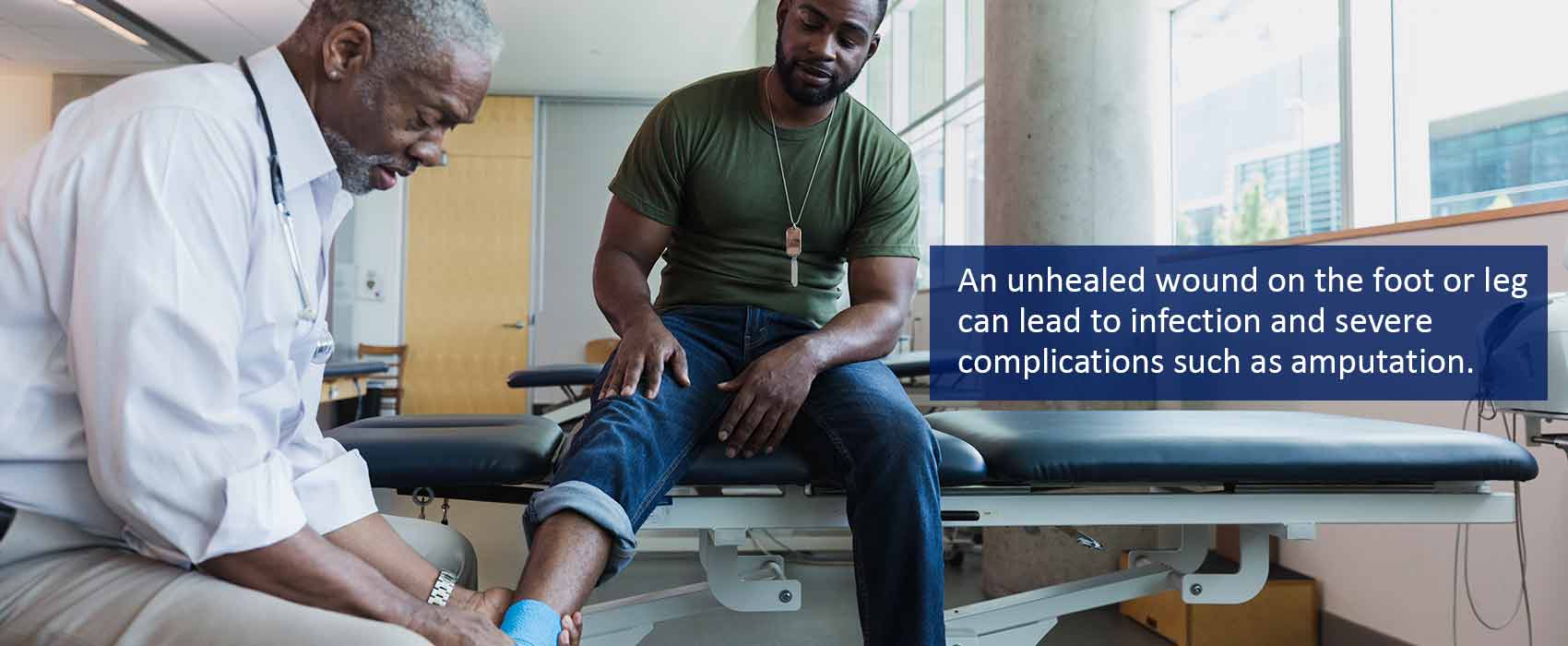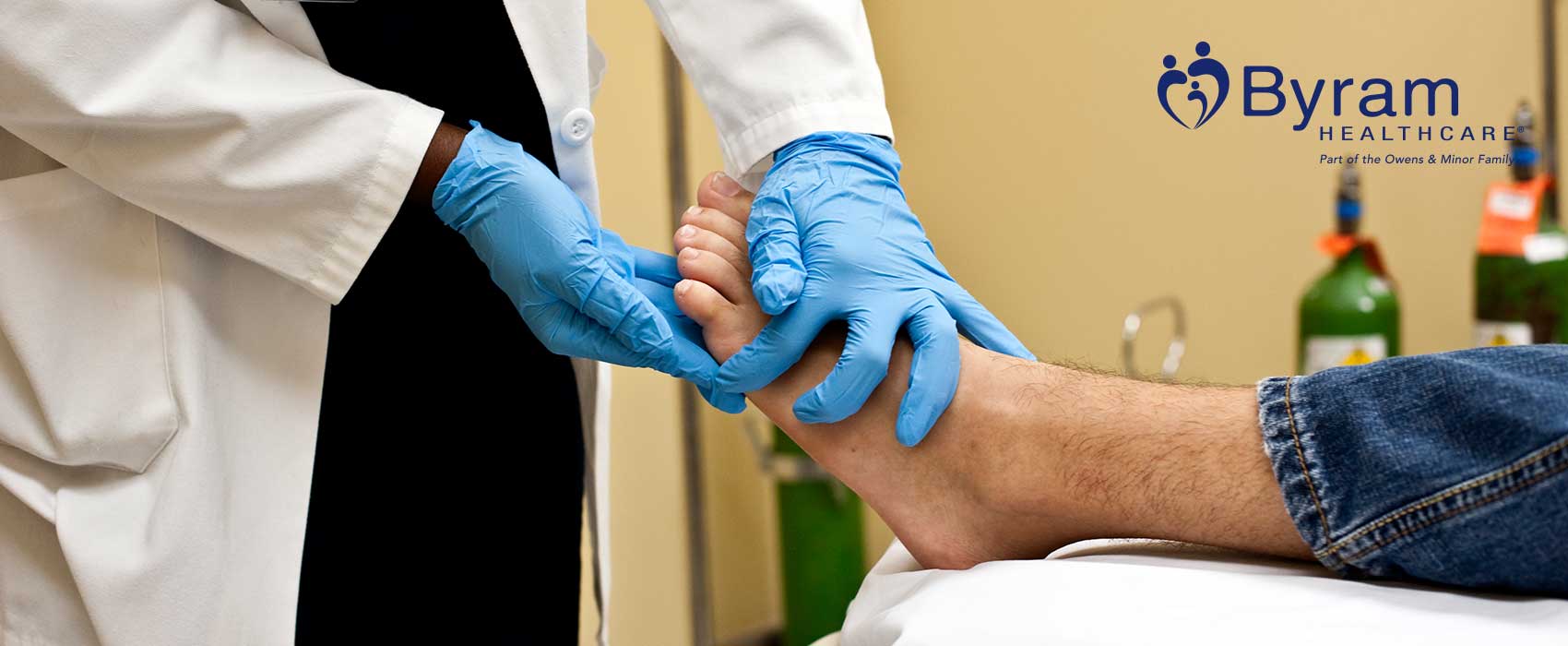
Chronic wounds are more than just a nuisance. When wounds do not heal properly, they are often stalled in the inflammation stage. They can cause pain, infection, disability and even loss of limbs. Currently, there are nearly 7 million Americans that suffer from chronic wounds, and the number is expected to rise as the population ages and diabetes becomes more prevalent. Up to 25% of patients with diabetes will develop a diabetic foot ulcer during their lifetime, and up to 24% of these patients require a major or minor lower limb amputation. This is one of the many important reasons why June 5th – 9th is designated as Wound Care Awareness Week, a time to educate people about the causes, prevention, and treatment of chronic wounds. Byram Healthcare and outpatient Wound Care Centers across the nation are joining forces to spread the word and help people with chronic wounds heal faster and better. In this blog post, we will share information on how to recognize chronic wounds and how to prevent them from happening in the first place.
Common Types of Chronic Wounds and Their Causes
Chronic wounds can result from numerous factors, such as poor circulation, diabetes, pressure, infection, trauma or radiation. Some of the most common types of chronic wounds are:
- Venous ulcers: These are wounds that occur on the lower legs or ankles due to poor blood flow from the veins back to the heart. They are often caused by varicose veins, blood clots or obesity.
- Arterial ulcers: These are wounds that occur on the feet or toes due to poor blood flow from the heart to the arteries. They are often caused by atherosclerosis, smoking or diabetes.
- Diabetic foot ulcers: These are wounds that occur on the feet of people with diabetes due to nerve damage, high blood sugar or poor circulation. They can lead to serious infections and amputations if not treated promptly.
- Pressure ulcers: These are wounds that occur on the skin or underlying tissue due to prolonged pressure or friction. They are often caused by immobility, bedsores, or wheelchair use.
- Infectious wounds: These are wounds that become infected by bacteria, fungi, or viruses. They can result from surgical incisions, animal bites, burns or punctures.
- Ischemic wounds: These are wounds that occur due to insufficient oxygen supply to the tissues. They can result from heart failure, shock, or anemia.
- Surgical wounds: These are wounds that occur after surgery due to complications such as infection, dehiscence, or hematoma.
- Radiation wounds: These are wounds that occur due to exposure to radiation therapy or nuclear accidents. They can cause tissue damage, necrosis, or cancer.
Signs You Have a Chronic Wound
A chronic wound starts as an acute wound. It becomes chronic when it doesn’t move through an expected or predictable rate of healing through each stage of wound healing. Wounds are considered chronic when they fail to heal within about four weeks after being treated. If it has not healed entirely in two months, it’s considered a chronic wound.
If you have an acute wound and find that healing is taking long or getting complicated, it’s important to look for any signs or symptoms that could indicate the transition into a chronic wound. The primary sign is irregular healing. If your wound doesn’t seem to be getting any better, especially after a few weeks, contact your doctor to learn more about how you should help treat it. If there is any pus, excessive inflammation, or extreme pain throughout the healing process, it could be a sign that the acute wound has turned chronic. Since most chronic wounds tend to stall in the inflammation stage of healing, you will notice irregularities. Talk to your doctor for more information about how to heal your chronic wound and what types of wound care supplies you’ll need to order.
How to Prevent Chronic Wounds
While some chronic wounds are unavoidable due to underlying medical conditions or injuries, there are some steps you can take to reduce your risk and promote healing. Here are some tips to prevent chronic wounds:
- Keep your blood sugar under control if you have diabetes. High blood sugar can impair your immune system and blood flow, making it harder for your wounds to heal.
- Quit smoking if you are a smoker. Smoking can damage your blood vessels and reduce oxygen delivery to your tissues, slowing down wound healing and increasing infection risk.
- Eat a balanced diet that supports wound healing. Include foods that are rich in protein, vitamin C, zinc, and antioxidants, such as lean meats, eggs, dairy products, citrus fruits, nuts, seeds, and leafy greens.
- Exercise regularly to improve your circulation and muscle strength. Exercise can also help you manage your weight and blood pressure.
While chronic wounds are becoming an increasing healthcare problem with many unrealized risks, there are things you can do to prevent their proliferation. By taking the above measures, you can reduce your risk of having an acute wound becoming chronic. To help spread the word, Byram Healthcare and outpatient Wound Care Centers around the country recognize June 5th – 9th as Wound Care Awareness Week. To help encourage healthy wound healing, Byram Healthcare offers a range of products for wound care and treatment.



